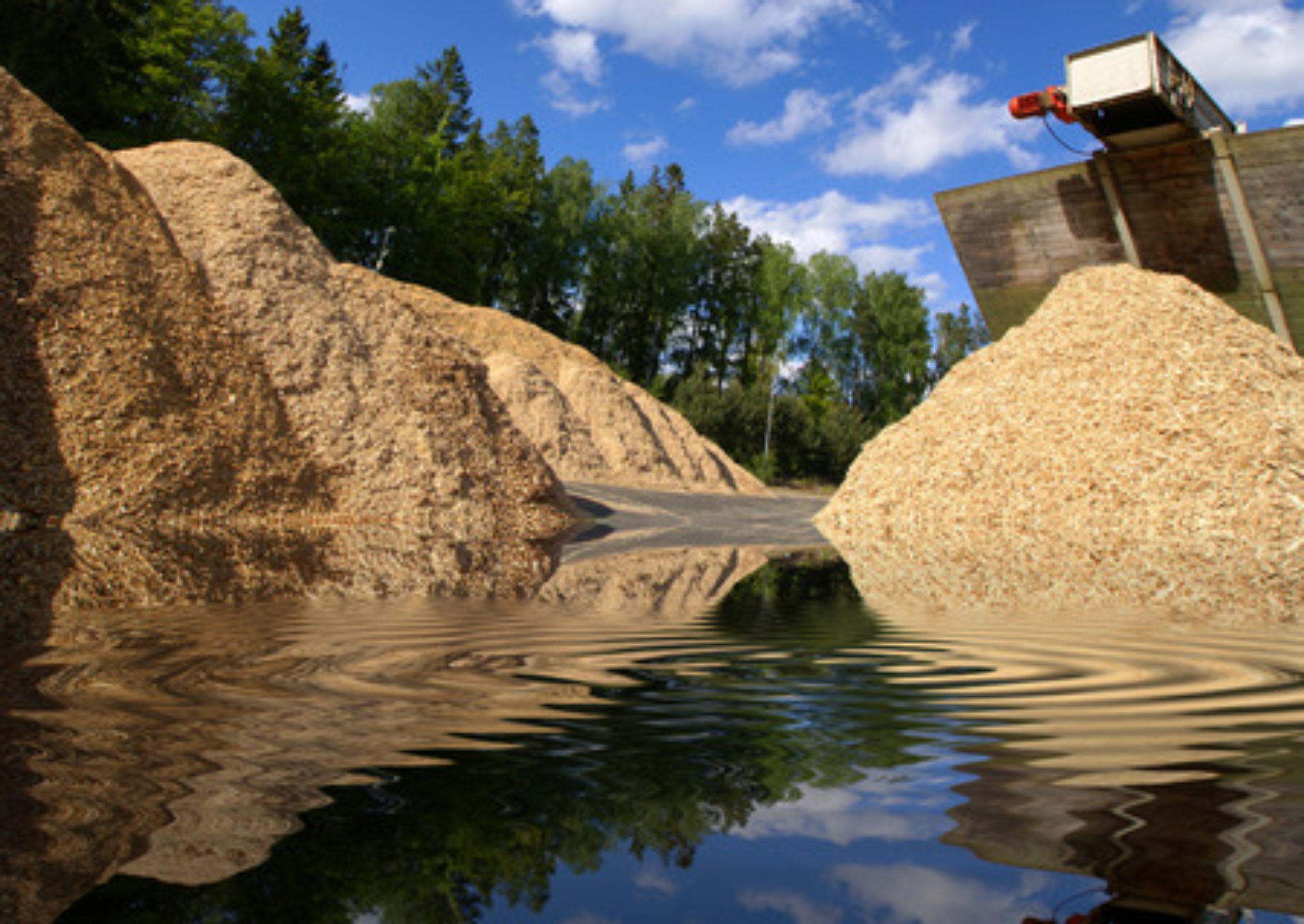Feedstocks — raw materials for char and pyrolysis oil
Pyrolysis can be used to convert diverse raw materials into valuable products and coproducts.
Some of these feedstocks include
-
- Bamboo, miscanthus, or other fast-growing biomass
- Crop wastes
- Sawdust or scraps
- Food processing wastes
- Municipal sewage sludge (MSS), animal waste (manure), or biosolids
- Plastic
- Tires
Have a potential feedstock not shown on this list? Ask us.
See below for descriptions of each feedstock and corresponding opportunity for converting these materials into valuable products:
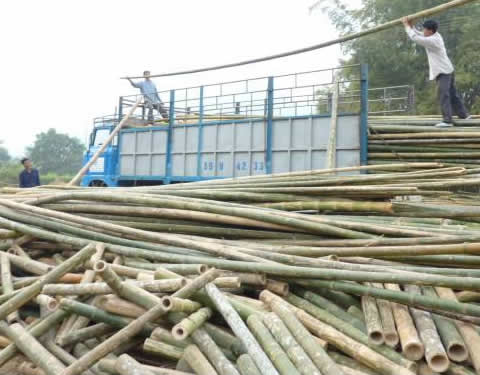 |
Bamboo or any other fast-growing biomass (see miscanthus, below) provide the most direct method of drawing down and sequestering carbon as the plants grow. Forests are extremely important carbon sinks. Then by processing scrap, waste, or otherwise unusable materials, CDS systems allow you to profitably return the carbon contained in the biomass to the soil as biochar, in a cascading value chain. | |
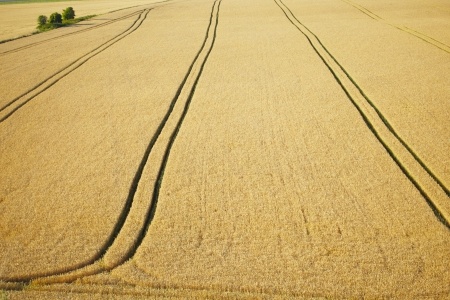 |
Crop / food processing wastes — Although some people worry that biomass crops will compete with food crops, the right rotations and uses can benefit both the demand for food, the demand for fuel, and climate change reversal. The soils of the American Breadbasket have lost an average of 4.9 tons of carbon over the past 40 to 50 years despite record amounts of crop waste (90-124 tons/acre) being tilled back into the soil every year. Corn stalks, for example, are returned to the soil, but they decompose and soon produce atmospheric carbon again. If corn stalks or other crop wastes are made into biochar, that carbon cannot return to the atmosphere as it is recalcitrant and microbes basically cannot break it down. Making crop wastes into biochar is an quick way to increase carbon in our agricultural soils. | |
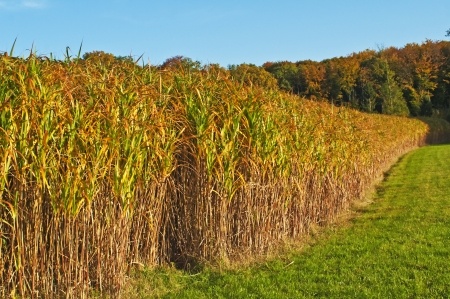 |
Miscanthus (several of the 16 known species) shows great potential as a biomass feedstock. It can yield 40 tons/hectare. It is a perennial and after establishment requires no herbicides or pesticides and little fertilizer to grow. One plot in Denmark has been producing for 30 years with only a 10% drop in yields. This carbon is in the form of glomalin and is an important part of reversing climate change as well as creating good tilth in agricultural soil. In an average 10-year rotation, considerable carbon is stored in the soil under this crop giving marginal soils a rest and getting them ready for another rotation of, for example, corn and soybean. Research done by the University of Illinois suggests that putting miscanthus into a Mid-west rotation can be good for the soil, good for farm economics and would supply a renewable source of biomass for pyrolysis. |
|
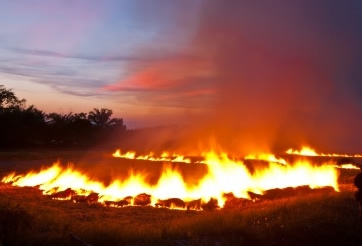 |
Rice straw and other byproducts of food and agriculture tend to accumulate or end up in the wrong place. Millions of tons of rice straw are burned every year, releasing methane and particulate matter pollution. Through CDS systems, this liability could be turned into an asset to the farmer, to the environment and to the CDS equipment owner. |
|
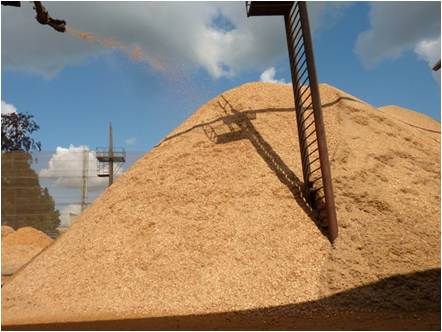 |
Sawdust from lumber milling and plywood manufacturing operations is perhaps the ideal material for pyrolysis.
In addition, wood biomass from trees that have died for one reason or another (due to beetle infestations, climate change or both), or “surplus” trees due to extreme weather events such as hurricanes, tornadoes or floods, also make excellent feedstock for pyrolysis. For forests with high volumes of dead trees, this also proactively resolves potential fire hazards. See related forestry industry description. |
|
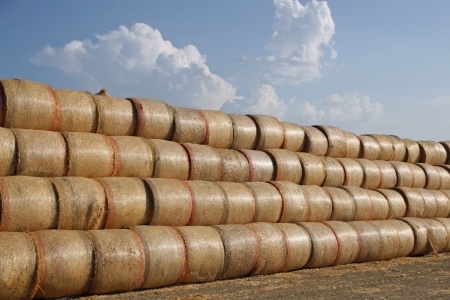 |
Spoiled or unneeded hay can be used in the CDS system. If a centrally-located pyrolysis system were placed in the middle of farmlands it could use a combination of available surplus materials, such as corn stalks, corn cobs, small grain straw, old hay, and miscanthus or switchgrass to accommodate individual farmer’s crop rotations. If the biochar were returned to the farmer’s fields and farming practices were modified to favor natural plant/microbial carbon sequestration, these fields could become significant carbon sinks. Having the flexibility to sell an otherwise unsalable product provides financial returns to farming operations.
|
|
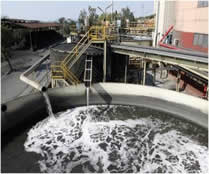 |
Muncipal Sewage Sludge (MSS) and wastes from livestock production can be safely processed using pyrolysis, together with biomass or other dry matter. | |
.jpg) |
Waste plastics (such as PETE bottles shown here, but non-recyclable, surplus, contaminated, unsorted/mixed types, etc.) can also be used to generate energy, particularly efficient and effective when recycled material prices are low or recycling programs do not exist.
See article about converting old tires and used plastics below. |
|
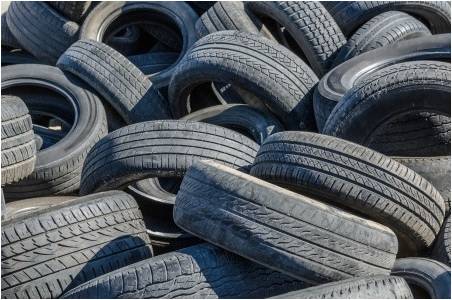 |
Used vehicle tires have high energy content that can be recaptured through pyrolysis without polluting the air, surrounding land or water.
See article below, Converting old tires and used plastics, or contact us for details. |
Many additional sources of organic matter can be used as feedstock for CDS pyrolysis. Suitable plant material includes greenwaste, waste wood, and woody weeds; additional agricultural sources such as nut shells, other straws, cotton trash, rice hulls, switchgrass; and animal wastes including poultry litter, dairy manure, and potentially other manures. Municipalities have long used a different type of pyrolysis as a form of thermal treatment to reduce waste volumes of domestic refuse. Some industry byproducts are also suitable feedstock including paper sludge and distillers grains.
Converting old tires into recovered Carbon Black (rcB) plus Energy
As counter-intuitive as it may seem to turn tires and plastics back into energy without polluting, that is exactly what modern equipment can do. Both plastics and tires have about the same caloric value per ton as natural gas, meaning that the conversion of these waste streams will yield high amounts of either thermal energy, electricity or low-sulfur drop-in diesel-like fuels. Since it is a closed-loop system, there are never any emissions to foul up the environment.
Recovered Carbon Black (rCB) has become highly prized by industry when it can be made properly, per ASTM specifications. CDS offers 3 pathways to feedstock owners that are all quite efficacious and profitable.
Depending on the size of the community and its waste streams it may be better for the local environment to convert collected plastics and tires into useable energy. The resulting syngas can be used to generate electricity or made into a drop-in diesel fuel (instead of expensive, conventional petroleum diesel) to power other remote, diesel, electrical generation equipment.
By locating the CDS equipment at the collection site, the same grinder can be used for both (plastic and tire) waste streams. We have financial models that allow you to plug in the amount your community is paying for the recycling or disposal of these materials and what the local utility or other provider is paying for electric power to estimate the ROI on such an investment. Please contact us for further information.
